29th November: Fog, frost, sunshine, and goats. A midday walk around Cheddar Gorge.
Cheddar Gorge, Mendip Hills, Somerset
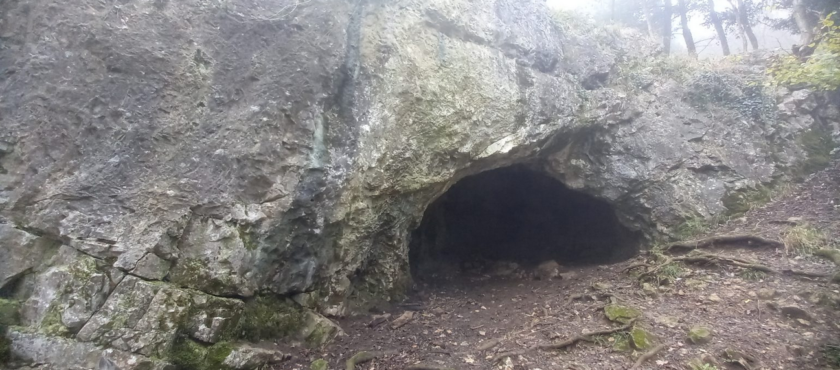

29th November: Fog, frost, sunshine, and goats. A midday walk around Cheddar Gorge.
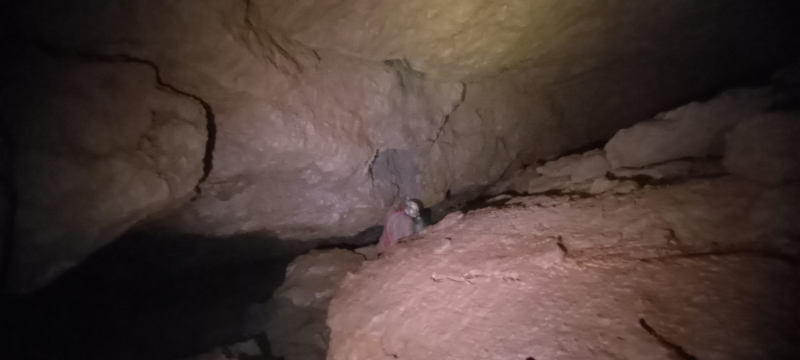
The Passages described below, in total, measured 499m and the digging team were judged winners of the 13th J’Rat Diggers Award (all members of the Shepton Mallet Caving Club, SMCC) on the evening of 19th November 2022. 16th October Well! It has been quite a while since my last visit to Home Close. With Callum […]
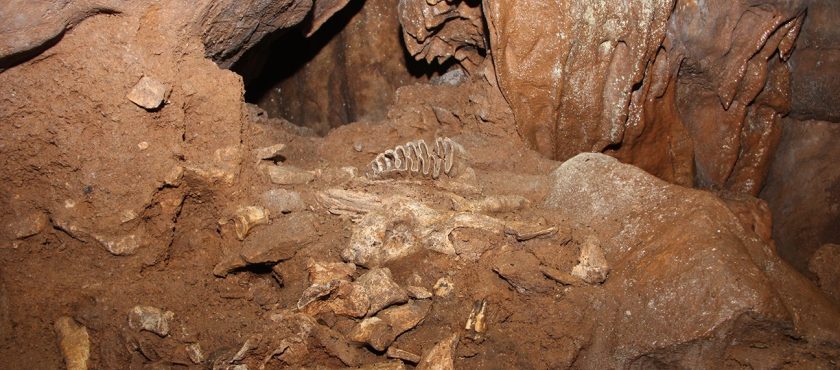
Centred on NGR SX 5476 5377 Introduction: A doline and associated network of cave passages were uncovered during infrastructure works for a major building development at Sherford, near Plymouth, Devon. In late July 2021, the author was asked to undertake a site visit and assessment when it was established that the talus material within the […]
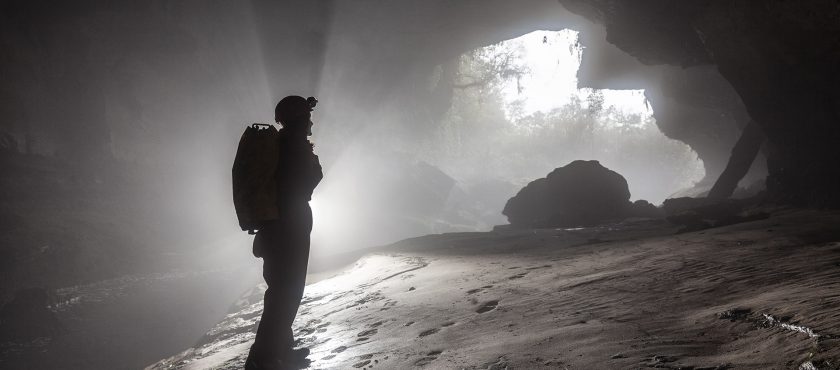
The recently discovered Sherford Cave appears to be hypogenic in origin with later epigenic processes evident. There is also evidence for the effects of Pleistocene frost and ice freeze/thaw processes throughout the extensive and complex network of cave passages. The cave and doline entrance is partially filled by talus (scree) material containing a Devensian (MIS […]
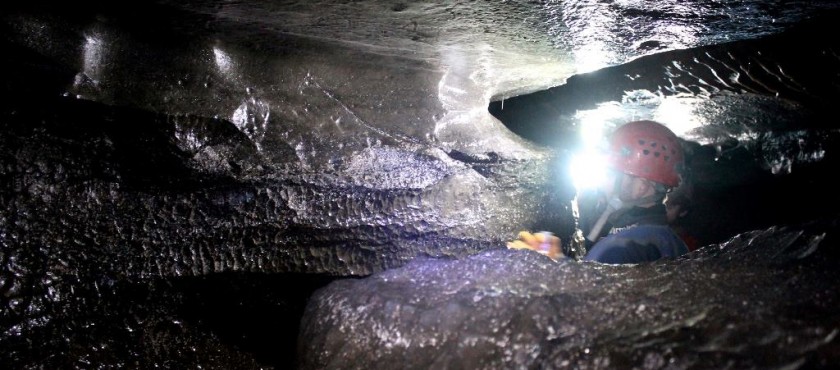
17th to 20th June 2019: Archaeology, Geology and Speleology! An account of a few day’s spent on the Burren, County Clare in the west of Ireland. The Cliffs of Moher.

27 th
December 2018: with Roz, Brockers, Nick,
Tav and Jon
Had purchased some
supplies and a good team assembled to help carry the equipment, including drill
bag, sundries bag, drill-bit tube, wire and a 3.5m aluminium ladder, into the
cave. …

6th December 2018: With Duncan, Jonathon,
Nick, Tav and Alex
The trip through Chamber 20
didn’t appear to be much wetter than last week, in spite of the recent rain. At
the sand dig, the water level had risen c.150-200mm and was encroaching into…

Last weeks digging
session was abandoned for the pub when only three of us turned up at Wookey
Hole.
Better turn-out this
week, with Nick, Tav, Jonathon, Duncan, Mike and, course yours truly, all keen
and raring to go, unfortunately Roz got left b…

15th November 2018: with Jonathon, Mike, Nick and Alex Surprisingly, the sand
dig was dry and didn’t appear to have backed-up at all after the very heavy
rain last weekend. However. A seepage of water through the sediments in the
alcove had caused…

8th November 2018: with Alex, Mike, Jonathon
and Roz
It’s been raining
recently and all the way up through Chamber 20 the results of this were clear;
the drips were stronger, pools were filling-up and water was flowing down the
calcite cascade. …

25th October 2018 With Alex, Nick,
Jonathon, Mike, Duncan and David Walker (curator at the Wells & Mendip
Museum and MCRA)
At the sand dig we were
relieved to see it had dried-up and quite quickly after the fill event by the
look of it. I s…

18th October 2018 With (l to r) Mike, Duncan, Nick and Tav After persistent rain
last weekend, it was not a surprise to find that the trip through Chamber 20
was wetter, the calcite cascade had water flowing down it. As suspected the sand
dig wa…

11th October 2018 With Nick, Mike,
Jonathon, Tav, Alex and Duncan
Nick, Mike and Jonathon
at the sharp end, digging and filling buckets, then moving the filled buckets
and occasional rocks to Tav who then facilitated dispatch. Alex hauling the…

4th
October 2018
With Roz, Jonathon, Duncan
and Mike
A mellow evening. Jon and
Mike rotated the digging, Roz transferred the filled buckets to the skip,
Duncan hauled the skip up the slope and I emptied the filled buckets. The procedure
was r…

25th September 2018: with Snablet, Roz and Tav
An impromptu trip after
Snablet’s enquiry “are we doing anything tonight?” following up some beer
fuelled conversation we’d had on Saturday evening at the Hidden Earth
conference in Churchill.
We…

23rd
August 2018: With Duncan, Mike,
Jonathon, Nick and Tav
Duncan and Mike down in
the sand-pit digging, Jonathon and myself shifting the filled buckets up to
Nick and Tav who were hauling and emptying the buckets. Plenty of talk about
speleoge…

16th August 2018: With Roz, Jonathon, Duncan, Tav, Nick and Mike.
Nick, Tav and Mike down
in the sand-pit; Duncan, Jon and Roz were on hauling duties; after taking a few
photographs, I was emptying the buckets. The sediment removed varied from s…

9th August 2018: with Brockers, Tav, Nick, Jon, Duncan and Alex. Jon, Nick and Tav playing in the sand-pit with their buckets and spades, Duncan took away their buckets, while the rest of us hauled-away and emptied the buckets and then, sent the bu…

2nd August 2018: I haven’t managed to dig
in Wookey Hole for a while due to one thing or another, in the meantime, the
rest of the team have continued with the task. Good to get back and see the progress
made.
With Mike, Alex,
Jonathon, Duncan,…

28th
June 2018: Tav, Jon, Mike, Jake and Nick.
Tav’s account, I finished
work too late. “Removed the usual steady stream of sand and clay which further
exposed the group of large boulders in the floor of the pot. With the aid of
the full team, t…

21st
June 2018: with Brockers, Nick, Jake, Tav, Jonathon and Mike.
I went to the dig-face to
look at a potential boulder blockage, Brockers and Nick were behind me. While I
concentrated on cleaning around the boulders and into an alcove, they co…

14th June 2018: with Mike, Jonathon, Tav, Alex, Brockers and Jake.
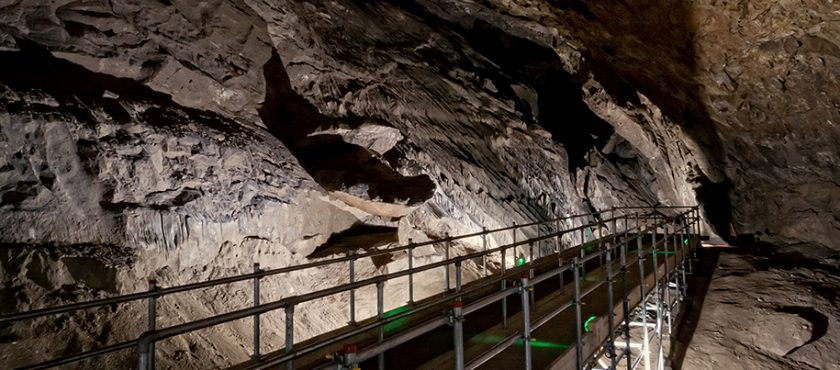
7th
June 2018: with Jake, Mike, Jonathon, Brockers and Alex.
Jake digging, Mike
passing the filled buckets up to Jon who was loading the skip. Brockers did the
brunt of the hauling up the slope and I was emptying the skips for Alex to
shovel the…

5th
June 2018: with Brockers and Duncan.
Rumours of a significant
blockage of the 60m crawl, the result of induced rapid speleogenesis (IRS),
turned out to be unfounded. The obstructing flake, that bars further progress
along the passage, had co…

31st
May 2018: with Brockers, Alex, Mike, Nick, Jake and Duncan.
Called in at the farm to
collect the mattock retrieved from Hallowe’en last Saturday before meeting the
rest of the team in the Wookey Hole car park.
Usual warm trip through
Cha…

24th
May 2018: with Jake, Jonathon, Alex, Duncan, Nick and Mike.
Nick, after a longish
stint working away, was keen to get back to digging, so we let him, Mike
clearing away the filled buckets to Jake, who was loading the skip. I was at
the firs…

15th
May 2018: with Jake, Tav and Duncan.
We did what we set-out to
do. The loose rocks, plus a few others, were removed from the top of the dig, we
also cleared a quantity of fine sediment as well. This should enable us to angle
the slope down,…

3rd
May 2018 : with Jonathon, Alex, Tav, Brockers, Mike and Ray Deasy.
Another fine assemblage of
willing diggers gathered, destined for the Sand Dig.
Alex digging, aided by Brockers,
I was loading the skip, Ray on the slope, leaving Tav, Jona…

1st
May 2018: with Jake, Tav, Jonathon, Duncan and Mike.
A bigger turn-out than expected
for this digging session.
At the Sand Dig, Mike digging,
Tav shifting the filled buckets back up to Jonathon, who was loading the skip and,
in between ti…

26th April 2018: Brockers, Nick, Jake, Jonathon,
Roz, Duncan, Mike and Alex.
A big team assembled this
evening, keen to get the Sand Dig re-started, it might have been bigger had others
been able to attend. Roz and I had arrived a little late, t…

19th
April 2018: with Nick, Duncan, Brockers, Jonathon,
Mike, Claire Cohen and Ray Deasy.
A good assembled for this
evening’s foray. As there were plenty of people to carry-on with the dig down
the rift, I decided to go along and check the curre…

12th April: with Tav, Jonathon,
Brockers and Duncan.
Five go digging! I
couldn’t make the trip last week, but others did and had cleared some of the
bang debris, the flake had been successfully fragmented. This
evening, we continued to clear the…

21st March: with Roz. A trip to apply some IRS. As usual, a pleasant trip though Chamber 20, a fine section of Mendip cave passage. There is still a good trickle of water in places. At the dig face, 4no. awkward holes, 500mm x 12mm, drilled and fill…

15th March 2018: with Duncan, Jonathon, Max Fisher, Tav, Mike M and Leonie (MCG). Alex came too! While us headed-off to the digs, Alex did his own thing, mooching around 20, etc. I went with Leonie to look at the ‘Sand Dig’, the others slid down the …

8th March 2018: with Jake, Jonathon, Dunc and Mike. It was good to get underground again after a two week lay-off, due to snow and other things. We continued with clearing-out the alcove and narrow rift beyond.

3rd March: with Roz, and Buster. Not digging in Hallowe’en Rift today so decided to walk to the Hunter’s Lodge Inn. Also an opportunity to see how much snow was on the hill-top. Up to Smitham Chimney, the pond had frozen over. Into the woods, …

22nd February 2018: with Jake, Jonathon, Brockers, Dunc and Mike M. Mike M and myself dropped further down the route to Sump 23.75 to have a quick look at another potential lead, where a feint air current could be felt. This will be left on the bac…
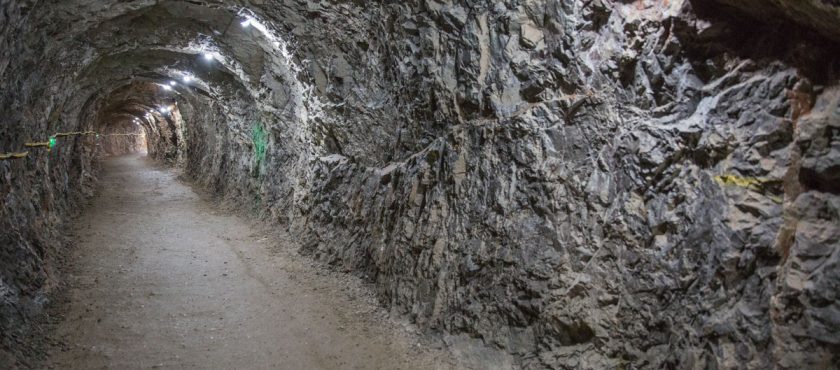
15th February 2018: with Jake, Jonathon, Tav, Roz, Duncan and Mike M. Good to have a project in mind and make a return to the quest in Wookey 20. Duncan and Max Fisher, on a diving trip into 24, have followed a dry rift passage for c.10m to a const…

Solo. The main purpose of the trip was to check-out the current state of the dig in Chamber 20. After the recent rain, I wasn’t surprised to find that the dig was still underwater. But, I did take the opportunity to spend some time admiring some of…

White Pit NGR ST 5270 5012 Heavy rain caused our planned trip into Welsh’s Green Swallet to be cancelled. Earlier in the day, Tony Jarratt (J’Rat) had suggested that Rich Blake and myself joined the diggers over at White Pit, near Priddy,
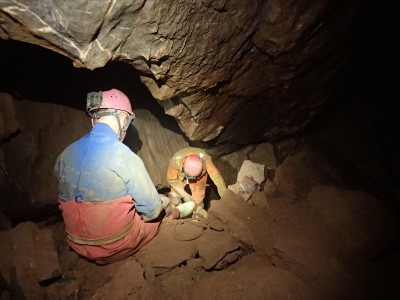
Welsh’s
Green Swallet [NGR ST 5506 4771] is something for the connoisseur. A couple of
short drops lead to low crawling-size passages with an ample supply of mud, much
like caving in liquid cement, there are some tight squeezes to negotiate along
the way too. It is, however, probably the longest known cave in the world in
Blue Lias Limestone and there are some fine selenite crystals to be seen.
First
dug by persons unknown in the 1930s and by Wessex Cave Club in 1961. A new
phase of excavation began in 1979, continuing to 1989 when the first
breakthrough was made.
During
October 1992, there was a period of sustained effort by myself, Graham ‘Jake’
Johnson, Rich Blake and Tony ‘J’Rat’ Jarratt, occasionally aided by others, to
‘push’ the current end of the cave. Eventually, there was a tantalising glimpse
into ‘black’ space beyond, it looked good and we were excited.
From
my personal logbooks:
28/10/1992 with Jake and J’Rat
Last
night’s bang cleared some stuff, one quite large boulder. I still couldn’t
squeeze through, but did get a better look and it does look good, nice strong
draught and what looks to be, hands and knees size passage going away, can only
see 8 – 10 feet. Jake was in raptures when he came back from drilling and
charging. We also shifted all the spoil back to the aven. J’Rat, also cordoned
off some fine selenite crystals. Another 1.5 hours trip.
29/10/1992 with Jake and Murray Knapp
Blitz-Krieg
strikes again!
After
some hammering, chiselling and barring, I finally managed to squeeze through
into new passage, 15ft. x 15ft. x 3ft, high. Waited for Jake and Murray to pass
through and then exploring brand new cave.
After
the squeeze, you enter a bedding plane and then, a T Junction, the right-hand
leg closes-down after 15ft., to the left, hands and knees crawling, up to 6ft.
wide and very well decorated, leading for about 40ft. to another T Junction.
The left-hand side leads for about 40ft.of crawling, with stal and selenite, to
a blind chamber, 10ft. x 5ft. x 3ft., with a dripping crack and nice float
calcite on the edge of a pool. The right-hand leg [of the T Junction] goes for
about 40ft.to a left turn and then, 15ft. to boulder break-down, some shoring
and a bit of work here will lead to another breakthrough next trip. This small
passage has the largest selenite crystals I’ve ever seen and some very nice
stal and rusticles.
The
entry squeeze is going to be left awkward because the whole area contains some
very delicate formations. It also makes all the work worthwhile.
30/10/1992 with Jake, J’Rat and Rich
Back
for more discoveries!
Didn’t
take too long to get to the break-down, this time we had some short scaffold
poles for a bit of shoring-up. Jake soon removed, what appeared to be a
chock-stone, and then squeezed through into more spacious open passage. The
way-on continued for about 60ft. until reaching more, big block break-down,
Rich managed to get in a further 15ft. to a dig, very squalid as well, so
that’s about it for a while.
The
new section doesn’t have any stal but, it does have some large selenite
crystals.
Following
the breakthrough, several surveying trips were made with Trevor Hughes, the new
extension survey length was 76 metres, we had guesstimated it as 230ft.(70m),
so we were quite close. While we were at it, the entire cave was surveyed.
“…18th
November, again on a Wednesday evening.
Vince, Jake and myself surveyed 97m of passage that evening. The Compost
Corner legs were most remembered – Vince managed, most successfully, to ensure
that for virtually every survey station, to read the compass, I had to bung my
somewhat hirsute chin into the mud, revenge I suppose for making him do all the
outward trip backwards.” (Hughes, 1998).
References
Simmonds,
V.J. Personal logbook 1990 to 1992
Gray,
A., Taviner, R. and Witcombe, R. 2015. Mendip Underground: A Cavers Guide (5th
Edition). Mendip Cave Registry & Archive
Hughes,
T. 1998. Welsh’s Green Swallet – the Survey (Or The Mud-Pile Strikes Back) in Belfry Bulletin, 495 p22-25. February 1998

11th October 2017: Attended a meeting of the Somerset Geology Group (SGG) hosted at the Earth Science Centre, Stoke St. Michael. The meeting discussed future plans and structure of the SGG followed by an open meeting to outline survey forms and procedure.
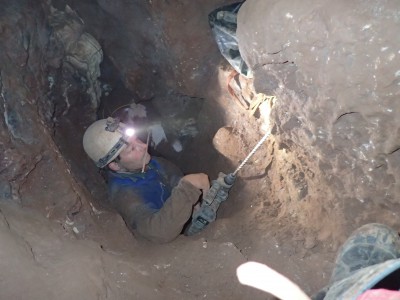
21st September 2017: Back in the day, there may have been more of us, but many of the team fell by the wayside, just me and Tav made the journey. Along the route, up through Chamber 20 to the dig,

Of wood and stone. The use of wood and stone in the construction of prehistoric megalithic monuments has been interpreted by some as, wood representing the living, life, whereas, stone is suggested to be, the dead, death. Wooden circles are replaced …

12th – 13th August: Above: Worm’s Head, looks like a dragon swimming out to sea! Spent the weekend helping out with exploration of a cave near Port Eynon, but on Saturday evening, I went for a walk along Rhossili Bay. Shipwrecks and sea caves! …
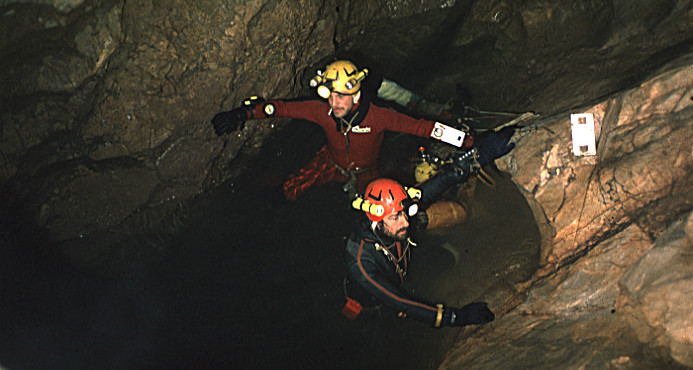
5th August 2017: Duncan Price visited Wookey Hole yesterday and reports that, after recent rain, the dig has flooded again.
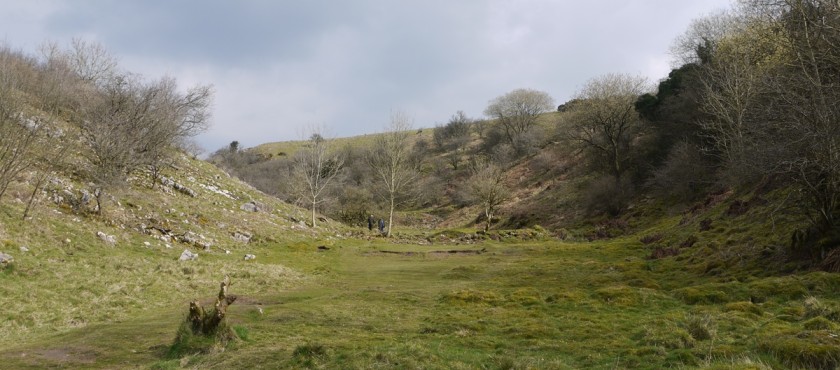
23rd July: Sunday morning stroll through Harptree Combe. This time of year it is very lush and green. There were a few showers of rain. Somebody has spent a constructive hour or so making these dead wood sculptures in the stream. Passing the rui…
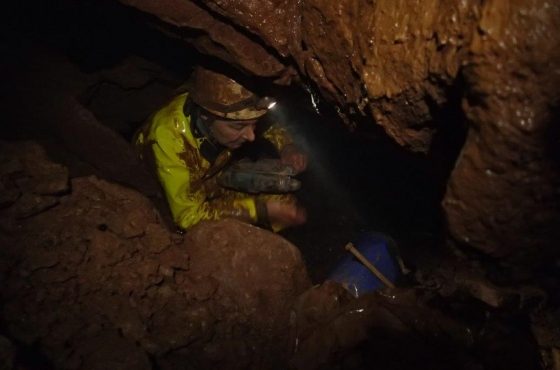
6th July: with Jake, Jonathon, Tav, and that stalwart of the Grampian, Goon. The usual warm trip up to the dig, the difference was the trail of blood left by Goon. At the end, Jake and Jonathon, quickly got on with the digging,

15th June 2017: Jake, Tav, Duncan P, Pete Bolt and Max Fisher. Continuation of the slope engineering. Tav, Pete and Max with a combined effort in spoil removal, Duncan and me were hauling it away. Jake was in control of spoil dispersal management. …
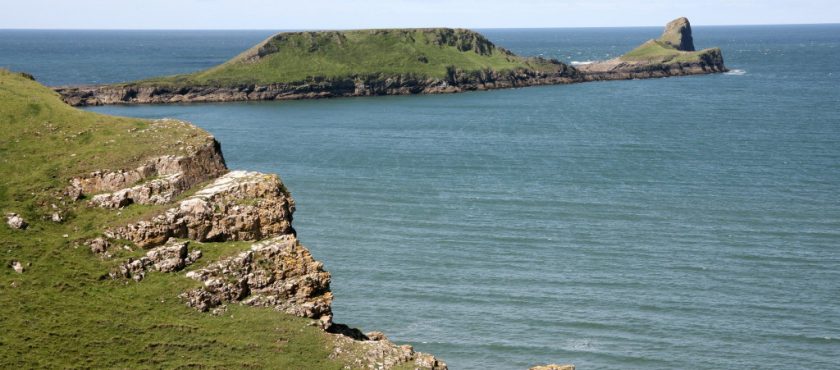
BCRA 2017 Field Meeting: Caves and Karst of the Gower Peninsula, Wales. 19-21 May 2017. A personal account. The Salt House, Port Eynon. Friday afternoon. Walk: Pilton Green (NGR SS 4465 8710) via Long Hole Cliff, along the coast path back to…

8th June 2017: with Jake, Nick and Tav. After some recent torrential rain, it was a relief to find that there wasn’t any water running into the dig. We had a brief discussion about how best to proceed, as the dig gets ever deeper. The decision was…
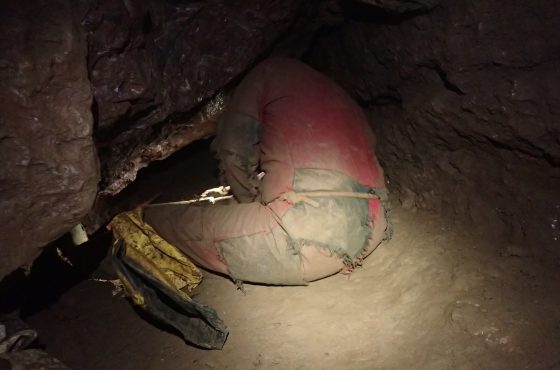
1st June 2017: with Roz, Brockers, Nick Tav and Duncan. It was a fine evening, warm and sunny, there were grumbling’s like “too nice to go underground”. These were ignored and off we went. At the dig, Brockers picked-up where he had left-off

18th May 2017: with Jake, Tav, Jonathon, Dunc P, Matt and Mandy Voysey. Me and Jake made our way to the dig, the rest of the team tarried awhile to admire the scenery. At the dig, Jake and I started to dig,

11th May 2017: with Jake, Nick, Tav, Duncan, Roz, Roger Haskett, Dave King and Ray Deasy. Roz took Roger up to chamber 20, Tav took Dave and Ray for a tour around, the rest of us headed up to the dig at the top of 20. At the dig, Nick and Duncan r…

4th May 2017: with Jake, Tav and Duncan P. The usual warm trip up through 20, even though we kept a relaxed pace. Ma and Jake took it in turns to dig, Tav and Duncan hauled and emptied the skip. T

13th April 2017: with Roz, Nick, Tav and Paul Brock. Happy days! Back to digging and a good team assembled. The usual steady, warm trip up to the end of 20. Tav and Brocker’s took it in turns to dig, me and Nick did the hauling – a joint effort, wh…

11th April 2017: with Nick. The main purpose of the trip was to have another look at the water level in the dig, so that we can get work there underway. It was noticeably drier on the approach through the cave passage. At the top of 20 we paused t…

14th March 2017: with Jake and Nick. The plan was to go up to the end of Chamber 20 in Wookey Hole to check the water levels in our dig there. Optimism, mostly on my part, began to waiver when a strong drip of water was noted in the show cave, furthe…

Recent tree clearance works around the aqueduct in Harptree Combe have allowed improved views of this example of Victorian engineering. The abutments have also been given some attention, revealing the dry stone wall construction.

26th February 2017: Cowleaze Lane to Compton Martin. From Ridge Lane, West Harptree across fields to join Cowleaze Lane. At the top of the lane, just before crossing the road, is a good spread of snowdrops. Over the road, leaving Cowleaze Lane to…
